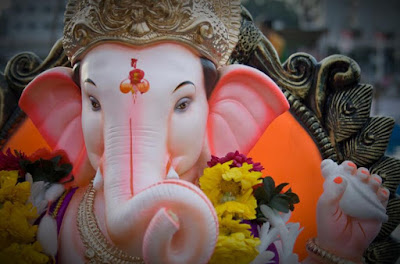Visarjan is a Sanskrit word for the final act of respectfully requesting departure, usually related to a God or Goddess. Now, we all are familiar with the meaning of this word, but visually we relate to Visarjan as a day of commotions and pollution, in every celebrating part of the country, which not only breaks our heart but also makes us ponder over the whole idea of disintegrating the creation of something which was regarded with such fervor just a few days ago. Hence arises the prime question on why exactly the god and goddesses are immersed in water and what exactly is the significance of a Visarjan.
The whole essence of Ganpati Visarjan is based on the philosophy of the Earth balancing the power and energy of Lord Ganesha to even out the universe.
The entire basis of the festival is held on the concept that during the first day of the Utsava, the idol is bought into the houses which is also called to be known as Prana Prathista, symbolizing the presence of the deity in the idol. After the Ganpati, Navratri, the power and energy of the lord is said to reach to an unfathomable peak, making it impossible for anyone else, but the Bhu Mata (Mother Earth, also a form of Goddess Shakti) to control it. So, the idea of immersing the idol in water lies in reason that Earth tends to calm the power of Ganesha, with him going back to his heavenly abode.
Another version on the procession of Ganpati Visarjan depicts it in a different light, where it almost acts as an instrument of balance in environment. It says that idols are made of the old clay that is dug up from several water bodies, while getting them to prepare as reservoirs, for the oncoming monsoon season. Once the Puja is done, the idol still clad with the kumkum and turmeric tilak and garland of herbs and flowers from the Navratri is put down to rest from its same area origin. Now one may think of the logical reasoning behind this entire process, of immersing the idol from the same place of its immersion. The reason for this is that while the clay goes back to where it came from, the particles of the herbs, turmeric and others serve as food for the aquatic life in the water bodies.
Viewing from a layman’s perception, one may think of how such an ecologically well thought festival, with a background supporting its environment preserving nature, can be called to be known as India’s toxic festival? The answer lies in the inventions of the new age of modernity and development. With statues made of Plaster of Paris, chemical paints, harmful concoctions, the new age have twisted the entire process and meaning behind celebrating festivals.
However, a ray of hope lies in the fact that an emerging trend of environmentally aware society, would together thread back the path to the true sense of festival and we celebrate it in the beautiful way that it was all throughout supposed to be.
Source: https://www.wheresmypandit.com/blog/why-do-we-perform-ganesh-immersion-or-visarjan









